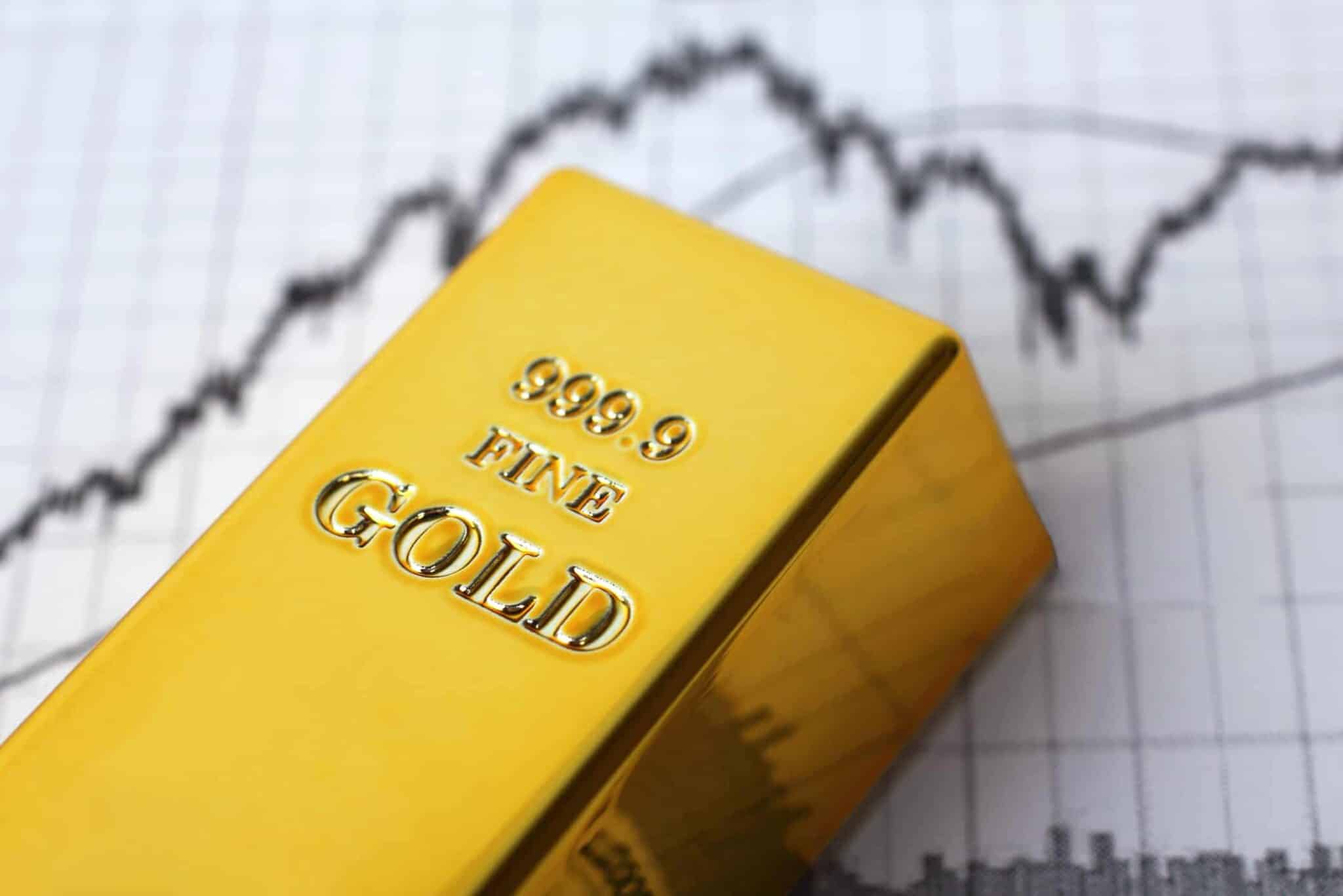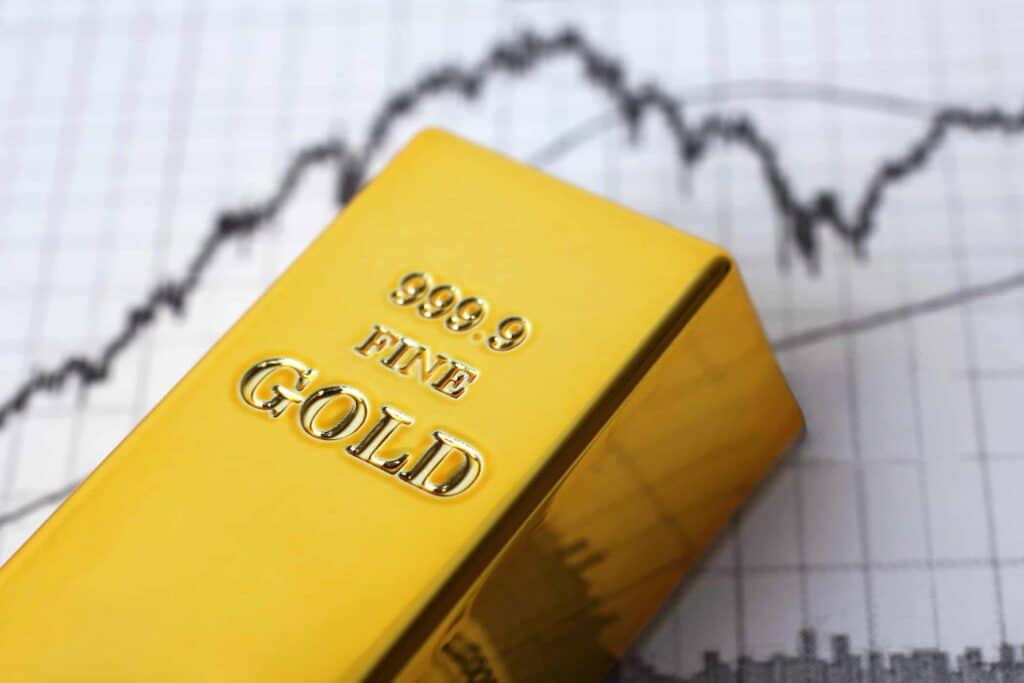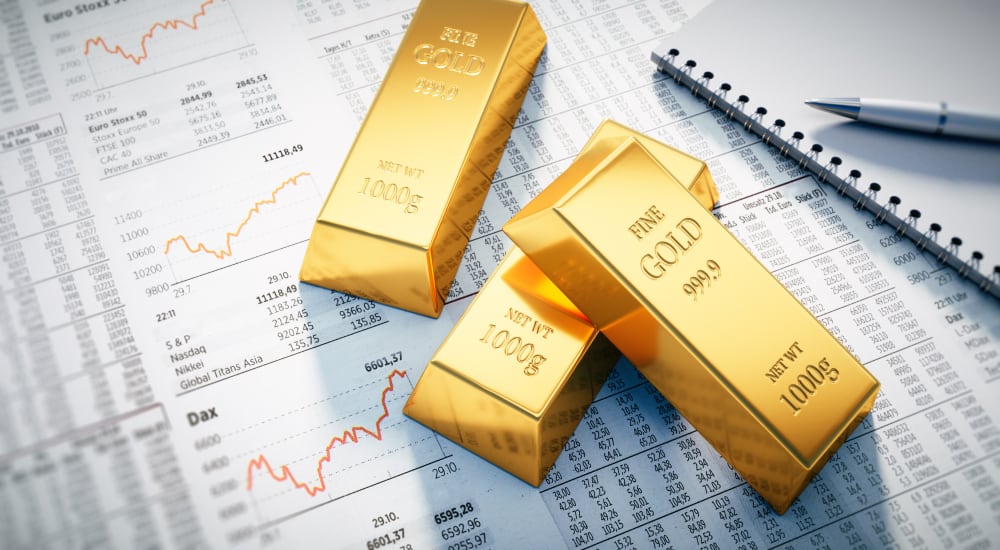
For centuries, even in biblical times, gold has stood out as the ultimate store of value. One need only look back at the 44 years that the precious metal propped up global financial economies via the Classical Gold Standard (CGS). The latter endured uninterrupted from the early 1870s until the outbreak of the First World War in 1914. It worked like clockwork because nearly all countries bought into the system by connecting their currencies to the volume of gold they held in reserve. So, anyone with paper currency in a bank account could exchange it for the equivalent in gold at the current price. For example, if gold was $50 per ounce, US investors holding $1,000 in notes could exchange the sum for 20 ounces of gold.
This article is about gold contracts (i.e., explaining the gold trade definition). In that context, the CGS initiated an era when governments, simply by issuing their currencies, entered into automatic contracts with their citizens to back the paper held with the same value in gold – exchangeable as and when required.
Background and Context
However, of course, the objective was not to spend time and effort exchanging gold for notes. Instead, the idea was to give the paper holders complete confidence that a universal asset of value supported their currency. This contractual arrangement extended far and wide, profoundly impacting international transactions. Why? Because the CGS was at the core of all money circulations (with swapping rights available no matter what denomination was in the mix). It fixed the exchange rates between participating coinage – unlike today (in 2022), when currency pairs fluctuate daily. Thus, the primary interest of central banks was protecting their minted paper values with gold convertibility to honour the swap contract no matter who arrived at their door requesting an exchange.
Fast forward to modern-day economies: the CGS no longer exists as governments have significantly diversified their asset portfolios, and economic disciplines (once exercised with precision) have diluted or dissolved altogether. In its place, open forex markets accepted the challenge of determining relative currency values based on the old-fashioned law of supply and demand. As a result, traders can access a consistent stream of tradable currency pairs, the most popular being the American dollar (USD) versus the euro (EUR), pound sterling (GBP), and Australian dollar (but there are scores of others).
All this aside, the allure of gold as an exchange medium persists and functions prolifically as a trader’s preference in modern financial markets and exchanges. Therefore, entering a contract to buy or sell the metal can transact in one of three ways:
- Take possession of or transfer physical gold (e.g., gold coins) – generally involving retail transactions with unsophisticated investors, much like buying apparel or appliances from a reputable dealer.
- Transact mutual or exchange-traded funds (ETFs) that align with SEC-regulated gold assets. This is akin to transacting index funds through the NYSE or the Nasdaq.
- Participate in options strategies converging on gold options and future contracts – the most common high-volume field for precious metal contracting globally. To learn more about this, read on.
A Closer Look at Gold Futures Contracts
These slot into the arena of standardised, exchange-traded contracts where sellers and buyers agree to deliver gold (24 carats) at a predetermined quantity and price on a future date. So, the advantages are that future contracts, buying or selling in any market conditions, carry the benefit of instant execution and regulatory compliance. The latter ensures that outcomes are 100% aligned with the gold price at the relevant time points. Who does it benefit?
- Jewellers and industrial entities – these entities deploy gold in manufacturing and therefore rely on future contracts for acceptable certainty on the metal’s pricing range for purchase or sale as a commodity or a component down the line. In other words, they rely on it to hedge pricing fluctuation risk.
- Investors interested in asset holdings of gold without taking physical possession prefer futures as a convenient way to establish a portfolio. However, strategies of this nature cannot avoid expiration dates. Hence, unless the parties roll over or counteract their future positions (i.e., continue the trading process), on the expiration date, they must take possession of the gold or deliver it to a buyer.
Entering a futures contract is a legally binding agreement for delivering gold on an agreed-upon date at an agreed-upon price via a regulated brokerage platform (i.e., a recognised exchange). The latter provides standardised virtual contracts that contain slots for:
- Quantity
- Quality
- Time
- Place of delivery
- Price
On the other end of the spectrum, future contracts allow speculators to participate in the markets without any physical gold backing.
How Do Gold Future Contracts Work?
More specifically, participants can take one of two positions on entering contracts:
- They can go long: Buying a fixed quantity of gold by accepting the obligation to take delivery of it on a pre-agreed future date and paying for it then at a pre-agreed price.
- They can go short: Selling a fixed quantity of gold by accepting the obligation to deliver it on a pre-agreed future date, receiving payment for it then, at a pre-agreed price.
The marketplace for futures – centralised and under the auspices of regulated platforms – is integrity-safe, dynamic and flexible. Moreover, it permits contractual parties to execute follow-up contracts that effectively erase original positions. For example (#1):
- Suppose an investor goes long for 100 troy ounces (TOs), known as a brick of gold, at $1,800 per TO (i.e., $180,000 total) on 1st December for closure on 10th
- At some point between the two dates, the opportunity arises to sell (go short) on the same quantity for delivery on 10th December at $1,810 ($181,000 total). So, the investor takes the gap to enter such a contract, thus counteracting the initial long one.
- In this case, the platform takes care of the gold delivery in the agreed-to quantities and prices on the effective date that meets the terms of the two contracts. The pricing difference belongs to the investor: 100 TOs x $10 = $1,000 profit, minus brokerage fees. In other words, the platform settles all accounts noting that the only variable in the two contracts featuring buyers and sellers was the price.
Another example (example #2), staying with the same situation as (a) above but representing a converse set of circumstances, appears as follows:
- The difference in this instance is that although the investor agreed to buy at $1,800 per TO, hoping to sell at a higher price on the closing date, gold’s value unexpectedly falls to $1,790 ($179,000 total). As a result, it threatens a $10 x 100 (i.e., $1,000) potential loss if the price doesn’t recover by 10th
- Furthermore, things can worsen if the descending trend has traction and continues downwards. Why? Because theoretically, the gold pricing can collapse to zero (i.e., taking every possibility into account) – and can certainly go lower than $1,790.
- Therefore, to protect against a deteriorating position, the investor enters a stop-loss contract (SL) to sell at the dropped price on the closing date, which counteracts the buy arrangement (i.e., thus nullifying it), but incurring a $1,000 loss (plus brokerage fees) in the process.
Observing the above, one can see that speculative positions fit well with the futures contract system, alongside investors accumulating the asset and others hedging commercial transactions. Moreover, it’s possible to contract long and short, with brokers leveraging support under specific rules and conditions. The latter crucially limits the damage from disastrous price volatility, otherwise allowed to roam free with no floors or tops.
Advantages of Futures Contracts With Leverage
Financial leverage creates the ability for gold traders to transact the metal at many multiples of the equity value in the transaction. However, of course, the same principle applies routinely to trading highly liquid currency pairs and stocks on recognised exchanges. The fact is that in all leveraging situations, traders in futures contracts rely on borrowing money significantly more than their personal stake – thus, building the asset value far above what they could ordinarily afford. So, for example (#3):
- Trader X goes long on 100 TOs (i.e., one brick) at $1,800 per TO = a total value of $180,000.
- The brokerage is ready to leverage the contract, funding $9 for every $1 that Trader X invests in the contract.
- Based on the above, Trader X injects only $18,000, and the lender adds in the $162,000 balance.
- As a result, connecting it to Example #1 above: A profit of $1,000 calculates out at a 10-day return of 5.5% derived from ($1,000/$18,000) x 100, and an annual return of 200% (i.e., 5% x 365/10).
- However, if things move along the lines of Example #2 above: The $1,000 loss = Annual return of negative 200%.
- Notably, leveraging limits vary depending on how brokerages classify your activities – even then, it differs from broker to broker.
We see, therefore, that leveraging is a two-edged sword. However, without SLs to protect gold futures contracts that go against traders’ expectations, the cutting power of that sword can be devastating. Again, you may ask ‘why?’ Because the losses in a contract sometimes amount to much more than Example #3’s $1,000 – perhaps swallowing the $18,000 equity and more. In these events, the platform will exercise a margin call requiring the trader to fill in the deficit.
Tying the loose end in the gold trade definition:
- Only approved accounts can trade gold futures (discuss this with your broker).
- The minimum investment of one gold future available in the US is COMEX – Governed. As per our examples above, the latter is a 100-TO contract. However, going through the NYSE, you can trade mini contracts of approximately one-third the size – 33.2 TOs.
- All trades are USD denominated, with minimum price movements of 10 cents. COMEX also settles all contracts on closing dates with gold delivery to New York-area vaults (subject to change on exchange instructions). Brokers will, under a separate agreement, arrange to hold investors’ physical gold if they use futures to take possession.
- The most active gold contracting months are February, April, June, August, October and December.
Related Articles
- What is the Commodity Futures Trading Commission?
- Learn to Trade Futures
- What is the Relative Strength Index?
Conclusion
In everything discussed above, we have focused on one-contract examples. However, it’s vital to appreciate that participants generally enter the futures market with multiple contracts simultaneously, leveraging being in play on each. Moreover, time horizons may be as short as hours. As a result, activities can expand significantly, thus imposing added pressure on investors’ equity – essentially, their margin allowances. Consequently, if things go south in many contracts in a short timeframe, as an investor/speculator/hedger, your equity can dissolve in a blink. Hence, while the field is exciting, enter it keeping in mind that the obstacles are real and can destroy your best-laid plans and strategies.
The correct approach is this: if gold as a trading asset appeals to your style and objectives:
- Start small to get a feel for the marketplace.
- Understand that liquidity is not an issue with gold trading. Thus, you don’t have to worry about SLs failing when you need them.
- However, never fail to deploy SLs and monitor your allowed margin’s net level constantly.
- Seek guidance from professional advisors as you take bigger steps in the gold contracting arena.
Forextraders' Broker of the Month
BlackBull Markets is a reliable and well-respected trading platform that provides its customers with high-quality access to a wide range of asset groups. The broker is headquartered in New Zealand which explains why it has flown under the radar for a few years but it is a great broker that is now building a global following. The BlackBull Markets site is intuitive and easy to use, making it an ideal choice for beginners.




